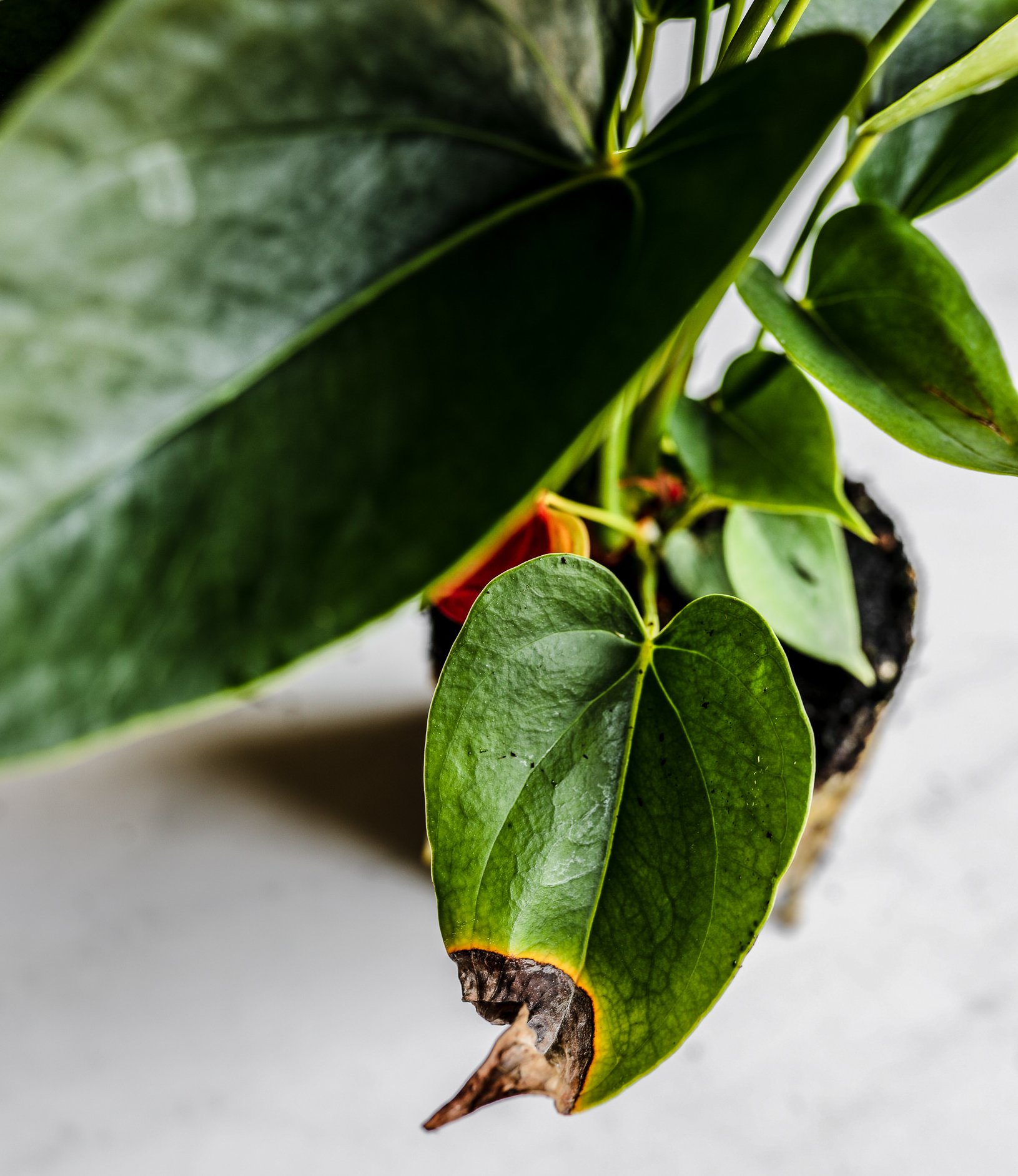
Have you been puzzled by the question, "Why are my anthurium leaves browning?" You're certainly not alone in this. Brown leaves on plants, especially anthuriums, are a common issue that many plant lovers face. These beautiful plants, known for their lush foliage, often experience stress or improper care, leading to the leaves turning brown. Let's explore the main culprits behind brown leaves on plants, including sunburn, nutrient deficiencies, watering problems, pests, and environmental stress.
Anthurium leaves turning brown could be a result of sunburn. These plants thrive in bright, indirect light and can suffer damage when exposed to direct sunlight for prolonged periods. If you notice brown patches or crispy tips on your leaves, it might be time to reconsider where you’re keeping it.
Additional signs of sunburn include curling or drooping leaves, with browning starting at the edges and moving inward. To prevent further damage, position your anthurium in a spot with filtered light. A window with sheer curtains or fluorescent lights can provide the gentle illumination they need. Regularly rotate your plant to ensure even exposure and avoid stressing one side.
Nutrient deficiency is another reason why anthurium leaves are turning brown. A lack of essential nutrients like nitrogen, potassium, and magnesium can cause brown leaves on plants. If you observe yellowing or browning tips, it might be time to reassess your fertilization routine.
Conducting a soil test can reveal specific deficiencies, guiding you in providing the right nutrients. Using high-quality, water-soluble fertilizer can replenish necessary nutrients and promote healthy growth. Regularly fertilizing every 2-4 weeks during the growing season can prevent leaves from turning brown. Don’t water your plant the same weeks you fertilize to avoid overwatering.
Improper watering practices can lead to anthurium leaves turning brown. Overwatering can result in yellowing leaves that brown at the tips, while underwatering can cause wilting with a crispy texture at the edges.
Generally, water when the top inch of soil feels dry. Ensure your pot has good drainage to prevent waterlogging and root rot. Adjust your watering schedule based on environmental conditions like temperature and humidity.
Monitoring soil moisture and your plant leaves will help you find the right balance.
Pests and diseases can also be responsible for brown leaves on plants. Common pests like aphids, spider mites, and mealybugs can damage anthuriums, leading to leaves turning brown.
Regularly inspect your plants for pests and take action using insecticidal soap or neem oil if needed. Isolate affected plants to prevent spreading. Fungal diseases like leaf spot and root rot can also cause browning.
Environmental stressors, such as temperature fluctuations and low humidity, can lead to anthurium leaves turning brown. These plants prefer stable temperatures between 65°F and 80°F and higher humidity levels.
To prevent brown leaves on plants, place your anthurium in a location that avoids drafts and sudden temperature changes. Use a humidity tray or room humidifier to maintain appropriate moisture levels. Regular misting can help but be cautious to prevent fungal issues.
By providing a stable environment with consistent care, you can enjoy lush foliage and prevent your anthurium leaves from browning.

Copyright Just Add Ice® Orchids 2023